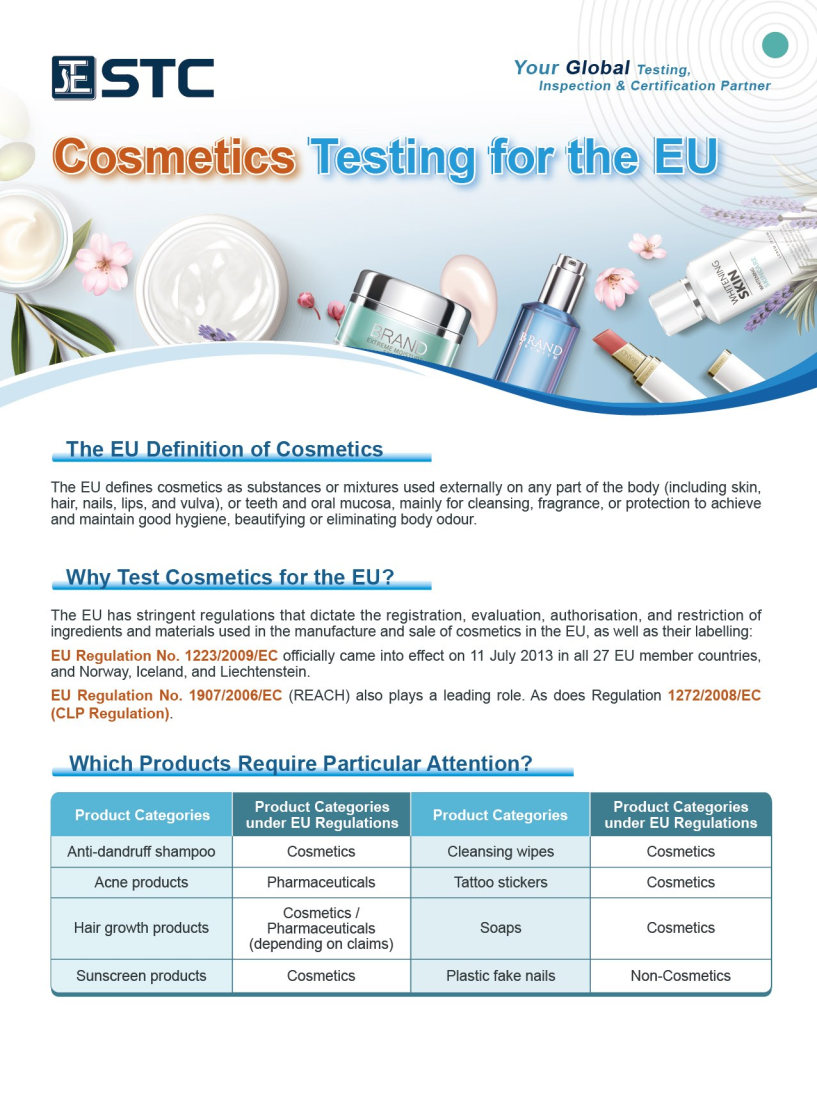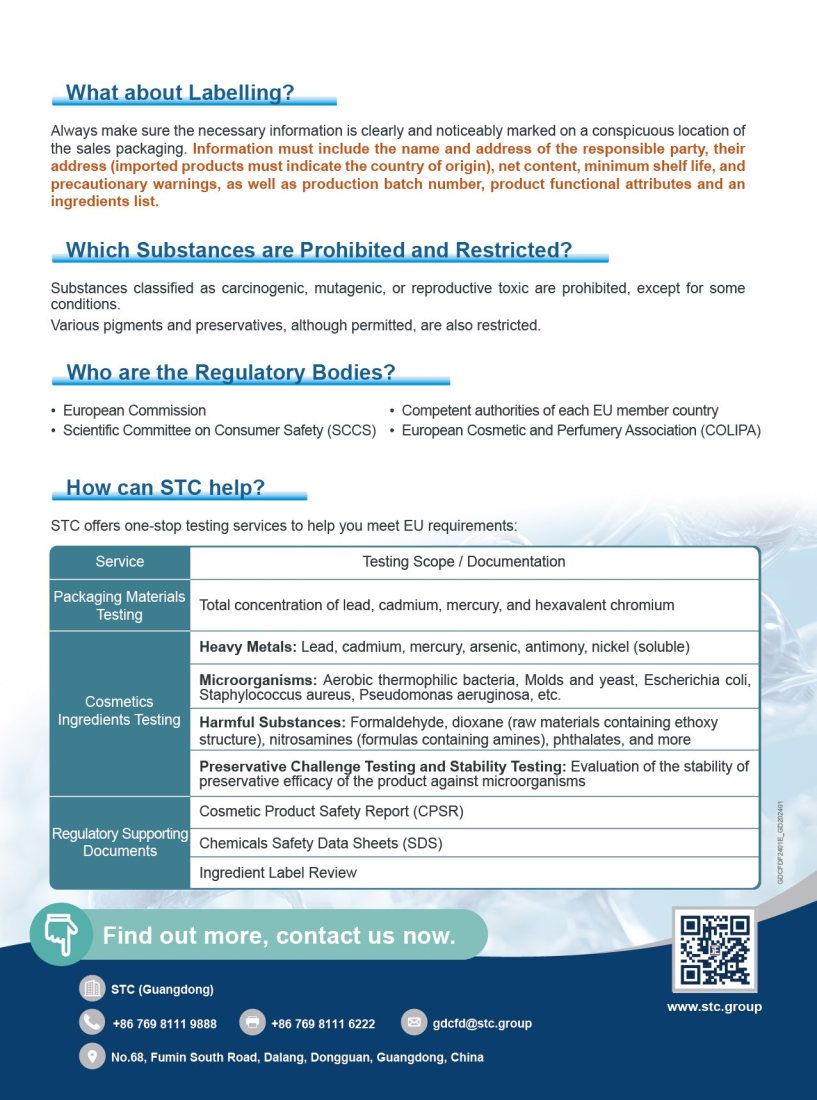The EU Definition of Cosmetics
The EU defines cosmetics as substances or mixtures used externally on any part of the body (including skin, hair, nails, lips, and vulva), or teeth and oral mucosa, mainly for cleansing, fragrance, or protection to achieve and maintain good hygiene, beautifying or eliminating body odour.
Why Test Cosmetics for the EU?
The EU has stringent regulations that dictate the registration, evaluation, authorisation, and restriction of ingredients and materials used in the manufacture and sale of cosmetics in the EU, as well as their labelling:
EU Regulation No. 1223/2009/EC officially came into effect on 11 July 2013 in all 27 EU member countries, and Norway, Iceland, and Liechtenstein.
EU Regulation No. 1907/2006/EC (REACH) also plays a leading role. As does Regulation 1272/2008/EC (CLP Regulation).
What about Labelling?
Always make sure the necessary information is clearly and noticeably marked on a conspicuous location of the sales packaging. Information must include the name and address of the responsible party, their address (imported products must indicate the country of origin), net content, minimum shelf life, and precautionary warnings, as well as production batch number, product functional attributes and an ingredients list.
Which Substances are Prohibited and Restricted?
Substances classified as carcinogenic, mutagenic, or reproductive toxic are prohibited, except for some conditions.
Various pigments and preservatives, although permitted, are also restricted.
Who are the Regulatory Bodies?
- European Commission
- Competent authorities of each EU member country
- Scientific Committee on Consumer Safety (SCCS)
- European Cosmetic and Perfumery Association (COLIPA)









